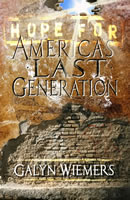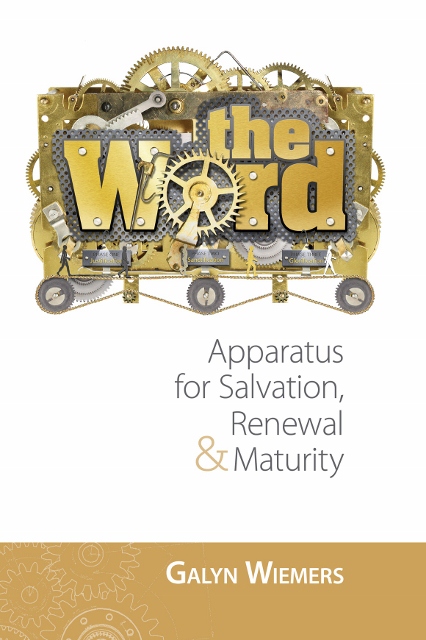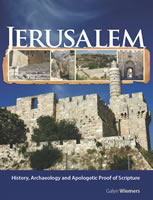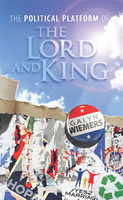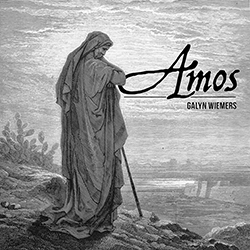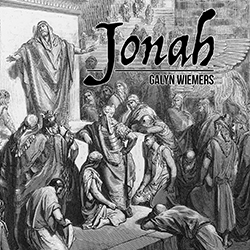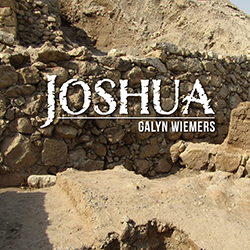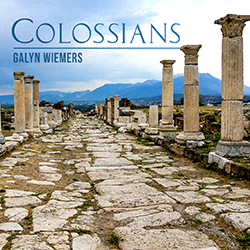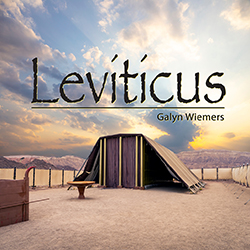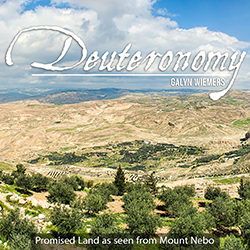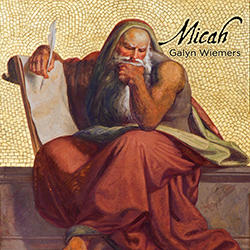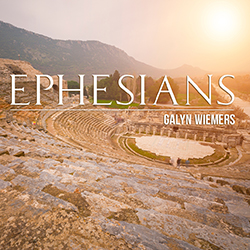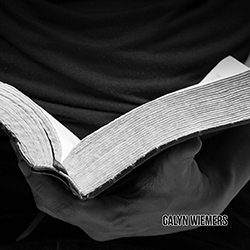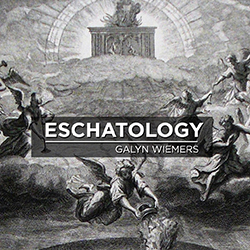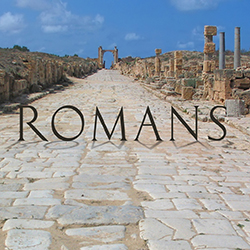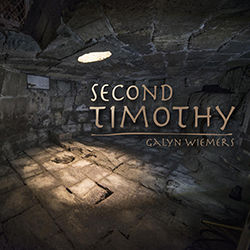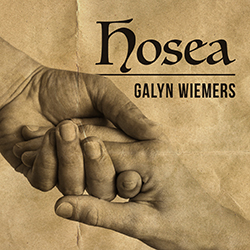Caesarea by the Sea from Galyn Wiemers on Vimeo.
Caesarea
by Galyn Wiemers, Generation Word
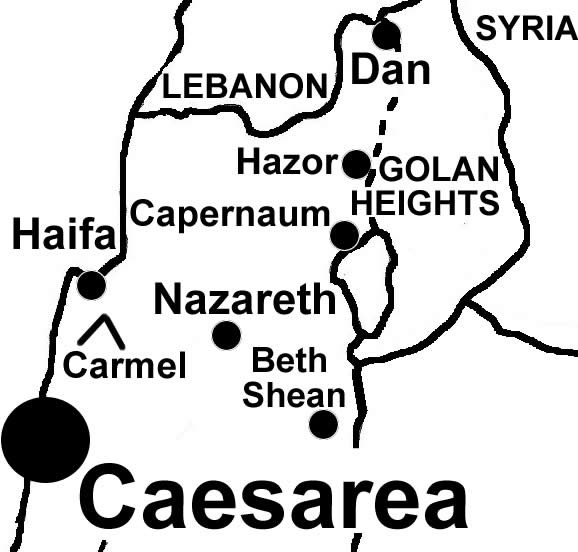
Caesarea in the Bible:
Act 8:40; 21:8-9, Philip preached here, settled here and raised four daughters here.
Acts 10, Peter came here to preach in Cornelius’ house;
Acts 12:19-24, God strikes Herod Agrippa I here;
Acts 9:30; 18:22; 21:8-16, Paul visits Caesarea three times;
Acts 23:23-27:2, Paul in prison for 2 years in Caesarea.
A Phoenician Port called Strato’s Tower before 22 BC when Herod the Great renovated it and called it Caesarea. Caesarea served as the governmental seat for Rome for 500 years. Roman procurators made Caesarea their home. Herod created the first man made port by building underwater walls with cemented blocks filled with masses of rubble.
This harbor was called Sebastos (Greek for augustus or great). A massive lighthouse sat on the corner of the harbor walls that was modeled after one of the Seven Wonders of the Ancient World in Alexandria. The city was a typical Roman city with grid street layout, efficient sewer system, public buildings and public entertainment, a grandiose palace in the sea. Pontius Pilate’s name was found on an inscription here saying he was “perfect of Judah.” Herod the Great built the theater and aqueduct
The walls and gates built by the Crusaders can be seen today in the harbor.
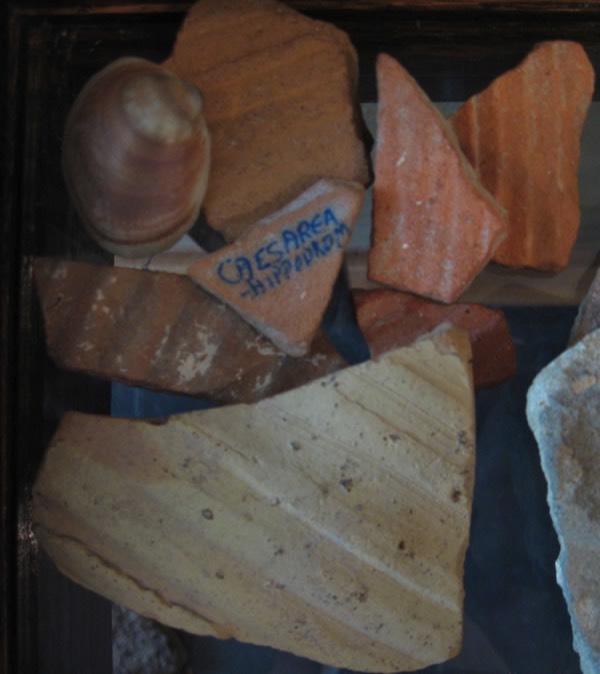
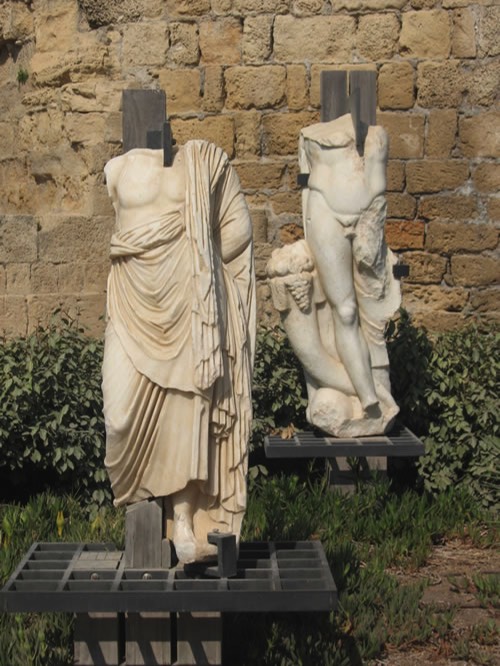
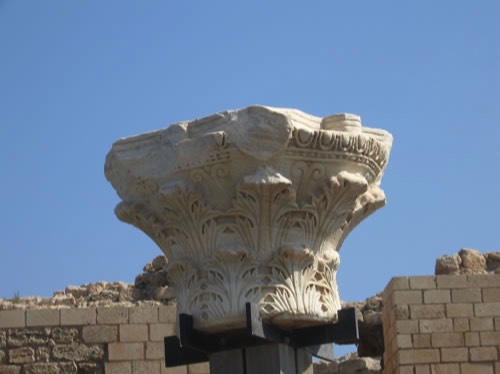
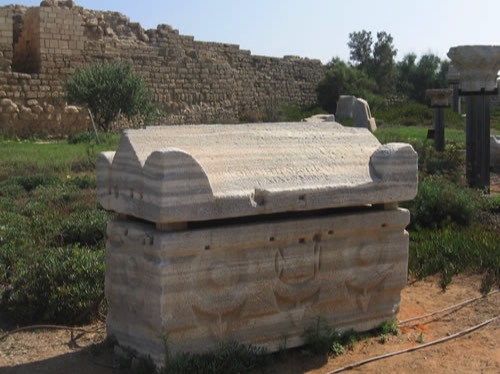
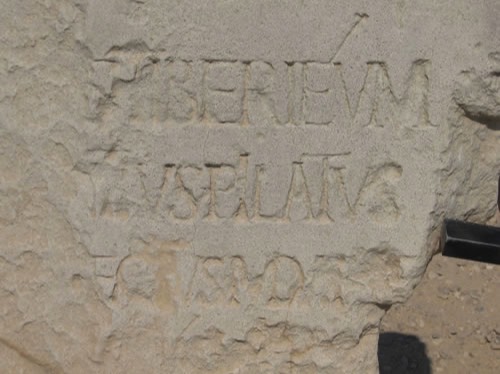
"Tiberium. . .
Pontius Pilate,
Prefect of Judea. . ."
This was originally a dedication of something Pilate had built in Caesarea to honor the emperor Tiberius.
It was discovered having been reused to built the temple.
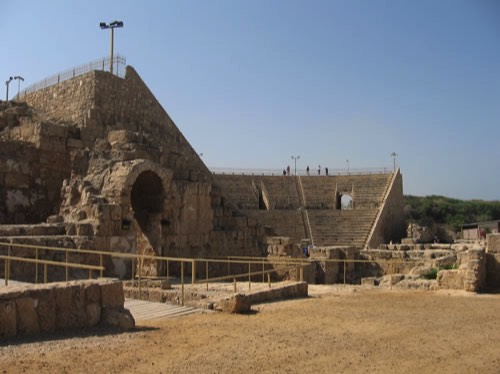
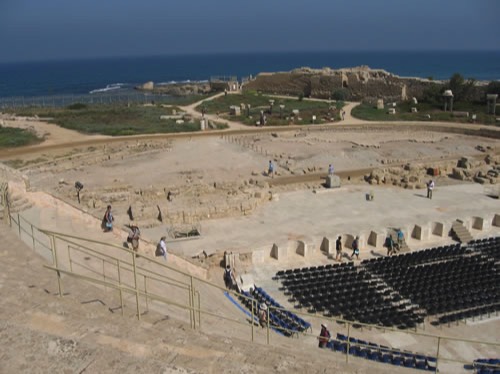
The remains of one of Herod the Great's palaces can be seen in the Mediterranean Sea.
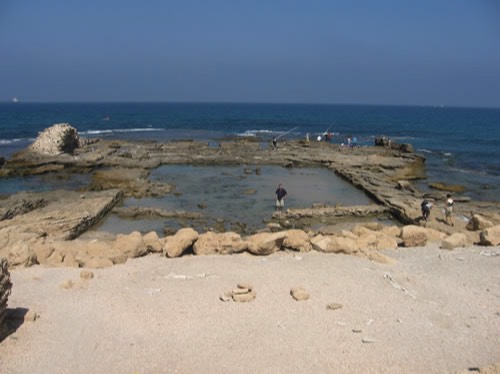
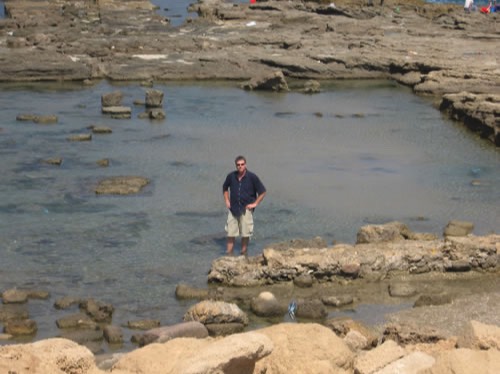
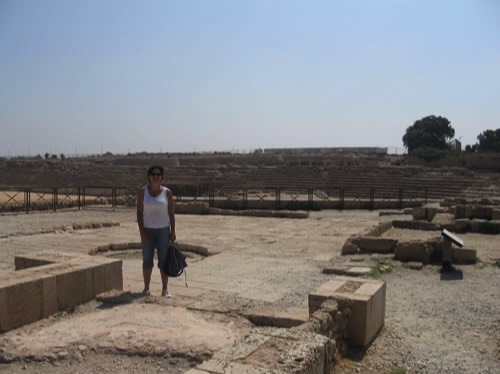
The mosaic from the decorative floor infront of Toni is in the picture below.
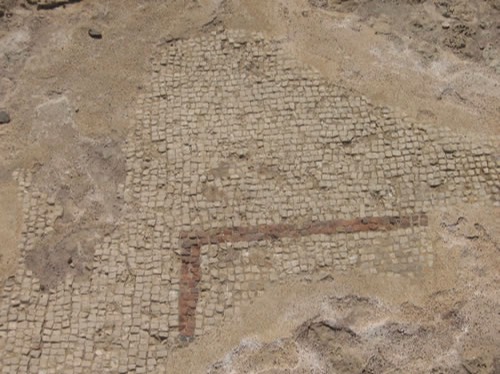
Paul would have walked and stood in this room.
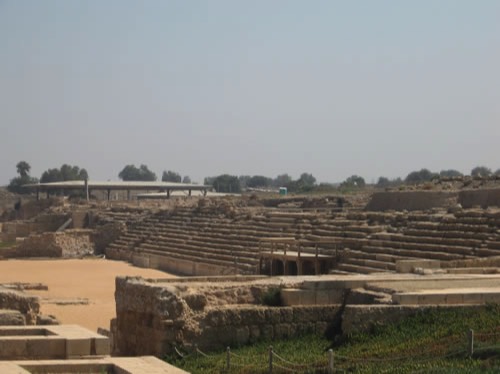
The seating is to the right and the race track is to the left.
The structure by the green grass were the governor's seats for the games at the Hippodrome.
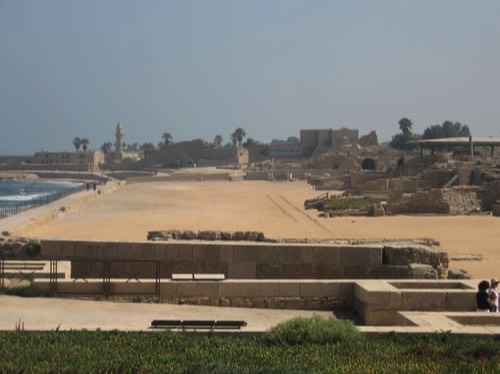
The parallel lines in the sand is the center of the track. The structure in the middle with the grass that extends onto the track was not part of the Hippodrome. It was built during the Byzantine and Crusader times
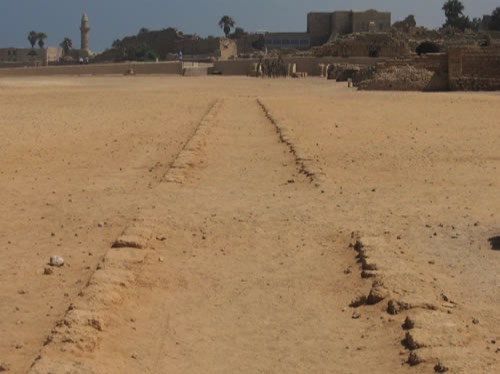
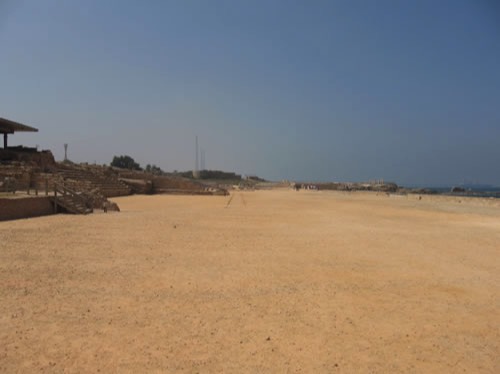
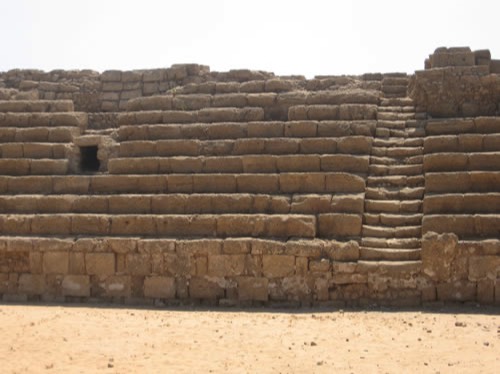
The Hippodrome was built by Herod the Great before the time of Christ. Herod then began what became known as the Caesarea Games.
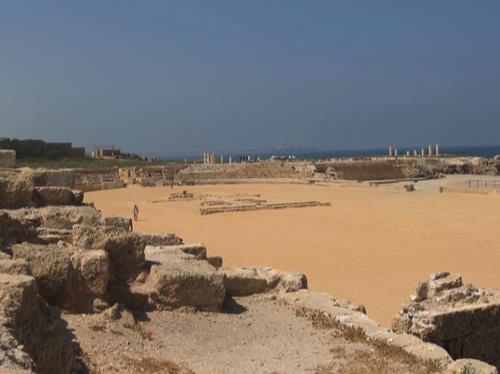
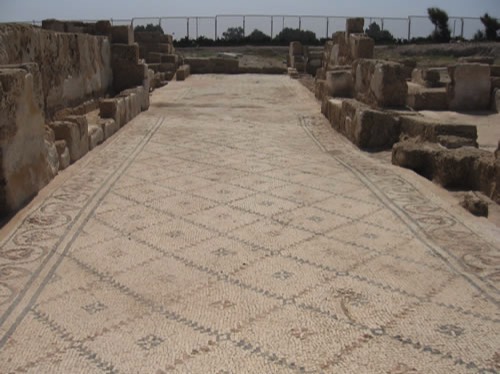
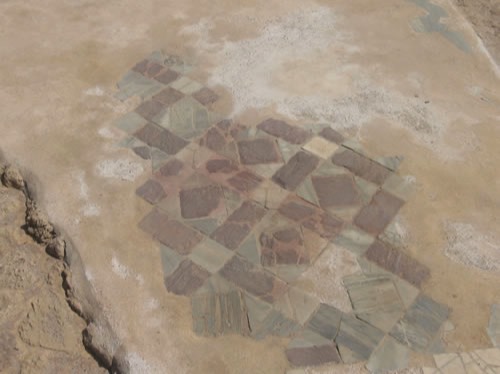
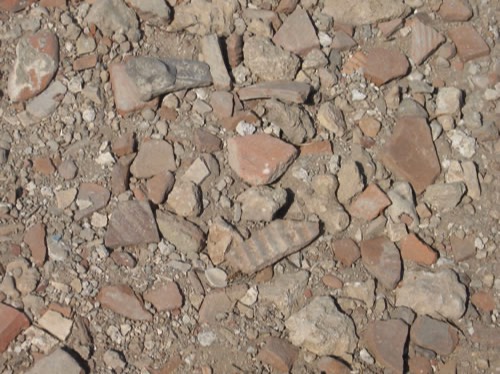
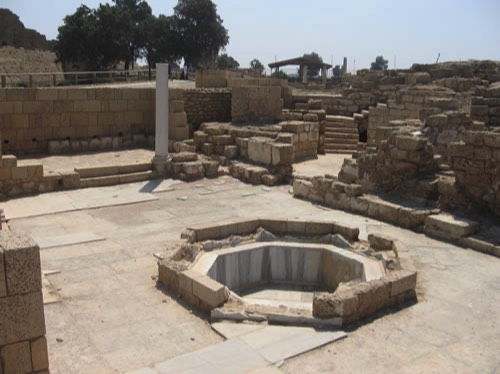
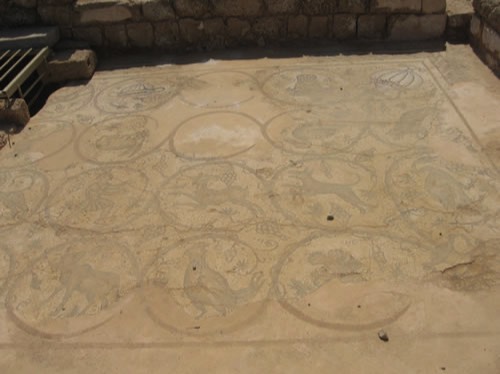
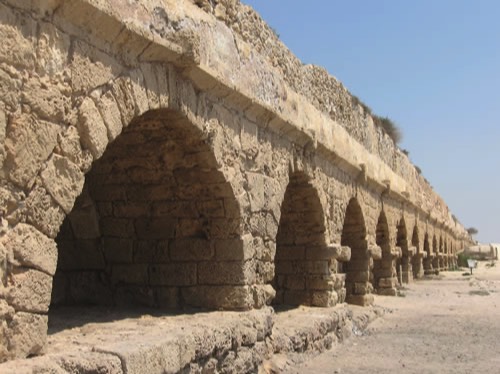
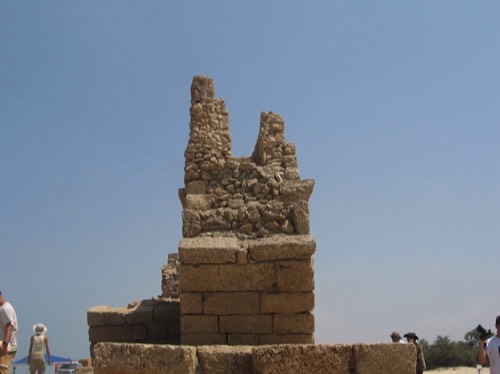
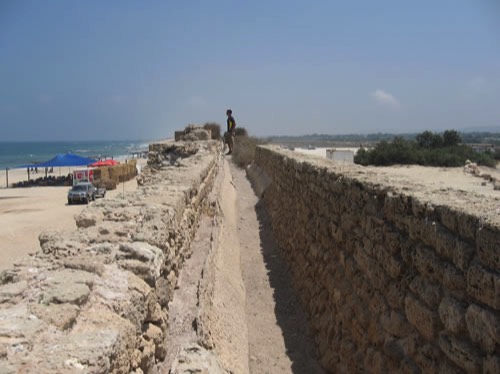
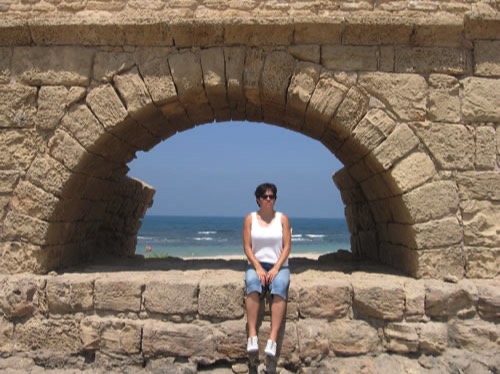
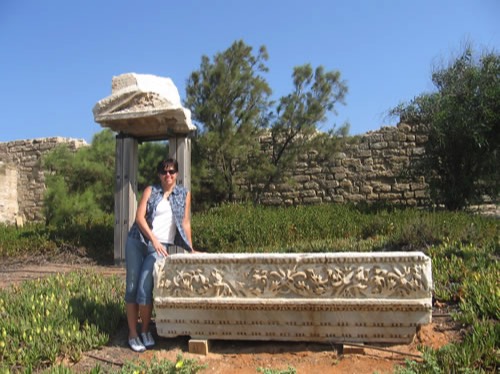
More great Caesarea photos and information from Carl Rasmussen.
Generation Word Provides:

